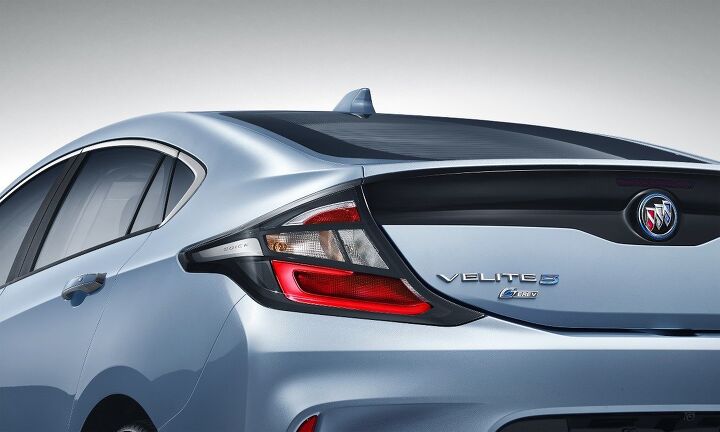Eastern Promises: 'Buick Volt' Ready to Tempt Chinese Greenies

Badge-engineered bliss awaits environmentally conscious General Motors buyers in China. Announced today, the Buick Velite 5 range-extended electric vehicle will soon launch in the car-hungry marketplace, but Americans might recognize it as something else.
Hiding in plain sight behind that Buick badge — which carries plenty of sales clout in China — is a Chevrolet Volt, which aims to compete against a host of low-cost electrics and gas-powered compacts.
Over here, the Volt carries a 53-mile electric range, but the Chinese testing cycle should grant the Velite 5 an emissions-free rating of more than 62 miles, GM claims. The 1.5-liter four-cylinder generator will soothe range anxiety fears among buyers afraid of local towing companies.
This isn’t the first GM hybrid vehicle to land on Chinese shores. An electrified version of the full-size LaCrosse went on sale last year, and GM claims the country can expect more plug-ins and battery electric vehicles within the next two years. Buick Bolt, anyone?
The Volt’s metamorphosis into a Buick is less odd when you consider the brand’s status in the Orient. With over a million vehicles sold last year, Buick — first sold in China in 1998 — is that country’s go-to upscale American nameplate, though Cadillac and Lincoln are quickly making inroads (with much ground to cover). By giving the technology-packed vehicle a new badge, it elevates the vehicle to the premium league.
While the Volt Velite 5 gives GM a fancy gadget to show off, it’s crossovers and SUVs that really tempt Chinese buyers. The Buick Envision remains the country’s best-selling utility vehicle, while sales of Cadillac’s XT5 crossover are skyrocketing. Late to the party, but no doubt looking to clean up, the newly downsized 2018 Chevrolet Equinox will debut in China later this spring.
That vehicle’s entry-level 1.5-liter four-cylinder allows early buyers to take advantage of a reduced levy for vehicle up to 1.6-liters in displacement. The lower levy, which sank from 10 percent last year to 5 percent, before rising to 7.5 percent on January 1st of this year, aims to stimulate vehicle sales. The levy rises back to 10 percent in 2018.
[Image: General Motors]

More by Steph Willems
Latest Car Reviews
Read moreLatest Product Reviews
Read moreRecent Comments
- Dave M. I'm sorry to see any storied name go away. The lifespan of the Malibu has fit perfectly in my lifetime years-wise. Some of the highlights include the first and second generations, the '78 revamp (very clean design), and the 2005 generation. Ford, GM and Mopar gave this segment away by allowing Toyota and Honda a foot in the door and then always having to play catch-up. How hard is it to make a truly competitive sedan at a profit? Obviously, Japan Inc. figured it out.I've driven a few rentals these past years; the Malibu got the job done but honestly the Passat and Altima were my rental preferences.
- Kcflyer actually yes. It's a shame that a product this uncompetitive can still outsell GM's entire EV offerings. Those products have had billions thrown at them. Imagine how nice the new Malibu, Impala, SS, and Lacrosse would be with that kind of commitment.
- 3SpeedAutomatic Nope....
- Bd2 Looking forward to flooding the rental lots with Hyundai and Kia models, this is just one obstacle now eliminated.
- Kcflyer keep the color. lose the stupid front design. make it reliable, at least as reliable as a base 911. Then and only then is it somewhat worthy of that price.


































Comments
Join the conversation
Well, the Velite 5 is much better than the Velite 4. Will the Bolt become the Delite 5?
I just checked in autonews, Buick has slipped behind Cadillac in sales. Buick...sucks....sucks